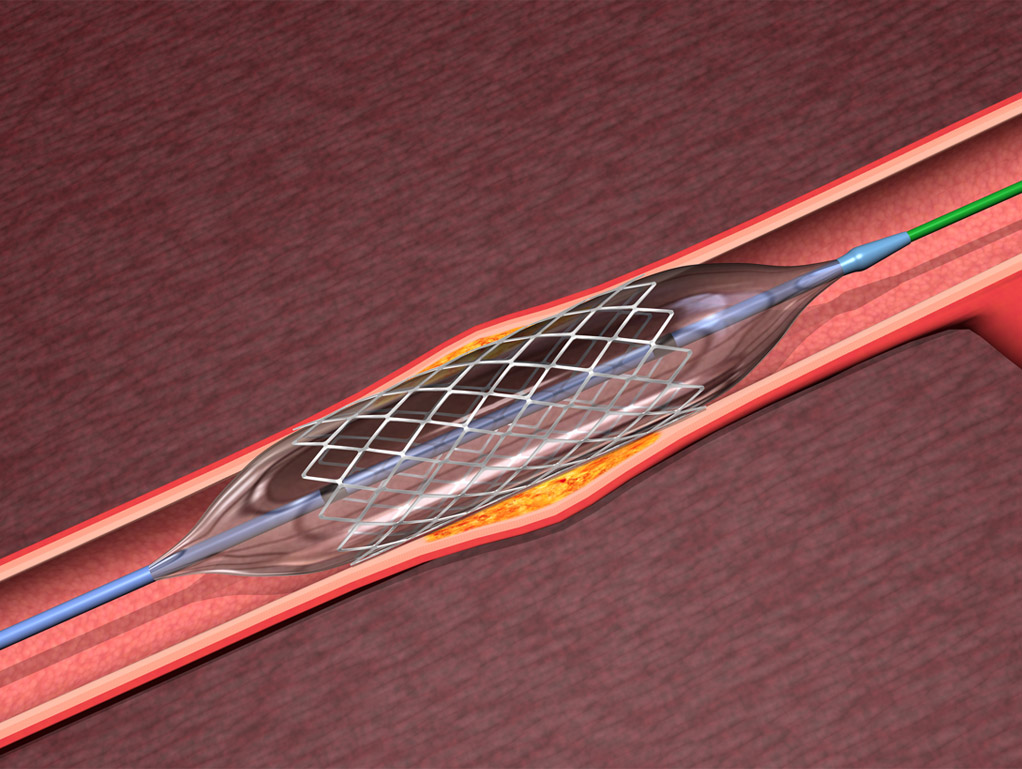
An adult heart pumps about 6,000 to 7,500 litres of blood daily, circulating oxygen throughout the body. When the vessels that feed into the heart become lined with a sticky substance — known as cholesterol plaque — to a significant extent, blood flow to the heart slows down, causing chest pain called angina.
If the blockage is so severe that it stops blood flow completely, the heart would be deprived of oxygen, causing intense pain. This known as a myocardial infarction or heart attack. Symptoms vary from a squeezing feeling in the chest to a sensation of strong pressure. There can also be pain that travels from the chest to the left arm, sweating, jaw pain or a feeling of choking with breathlessness. Timely treatment is essential to unblock the blood vessels and restore blood flow.
Traditionally, severely blocked arteries causing heart attacks are treated with open heart surgery. A cardiovascular surgeon makes an incision to open up the chest. A section of a healthy blood vessel is taken either from the leg, arm or chest and attached to either end of the blocked section of the artery. This allows blood to bypass the blocked area and flow to the heart muscle. This procedure is known as coronary bypass surgery.

Nowadays, interventional cardiologists can perform minimally invasive or ‘key-hole’ procedures known as coronary angioplasty to open up blocked arteries.
A sterile catheter is threaded through a blood vessel in the leg or wrist to reach the affected coronary artery. A tiny balloon at the tip of the catheter is inflated to widen the narrowed artery. Angioplasty is often combined with the deployment of a stent — a small wire mesh tube that pushes plaque against the arterial wall. This holds the artery open and prevents the artery from re-narrowing; it also prevents small pieces of plaque breaking off and causing future heart attacks. A device may also be used to suck out blood clots.
As the heart vessels heal, cells will grow through and around the stent to secure it into place. New types of stents called drug-eluting stents can be used to prevent excessive scar tissue from forming and blocking blood flow.
The choice of treatment for a heart blockage depends on the severity of the condition, the location of the blockage, overall heart function and whether there are any other pre-existing medical conditions.
- Coronary angioplasty is recommended for patients who suffer from frequent or severe angina despite being on optimal medication and adopting a healthy lifestyle. On doing specialised tests such as a stress echocardiogram (Cardiac Ultrasound) or myocardial perfusion scan, there is objective evidence of reduced blood flow to an area of the heart muscles caused by one or more narrowed coronary arteries. Emergency coronary angioplasty is also indicated immediately after a heart attack.
Angioplasty has the advantage of being less invasive. The procedure requires only a small incision and carries less risk of infection. Pain from the procedure is minimal and recovery time is often significantly reduced making a lengthy hospital stay unnecessary.
- Bypass surgery may be recommended where:
- The left main heart artery — which supplies most of the blood to the left ventricle — is severely narrowed
- All the three main coronary arteries are blocked
- There is more than one diseased coronary artery and the heart’s main pumping chamber (the left ventricle) is not functioning well
- There is a coronary artery blockage for which angioplasty isn’t appropriate
- Previous failed angioplasty that was not successful in improving the blood flow in the coronary arteries
- A diseased heart valve that needs to be repaired or replaced in addition to the problem of blocked arteries
- Bypass surgery is a better long-term solution. Diabetics, especially those with compromised function of the heart, tend to do better with bypass surgery.
It is important to discuss with your cardiologist in order to understand your condition and the pros and cons of each treatment approach before making a final decision.
After undergoing angioplasty or coronary artery bypass surgery, it has to be made clear that neither procedure is a cure for the underlying coronary artery disease which caused the blockages in the first place. The results and long-term outcomes will depend on taking medication diligently to prevent further blood clot formation, lower blood pressure and cholesterol, control diabetes (if present), and maintain a healthy heart function.
Healthy lifestyle choices must be part and parcel of our daily lives — from regular exercise and a diet high in whole grains, fruit and vegetables, to getting enough rest and managing stress well. We also need to maintain an optimum body weight, stop smoking if we do so, and go for regular health checks.







